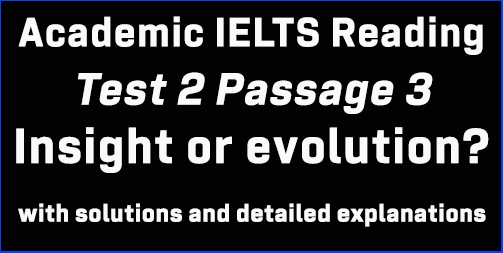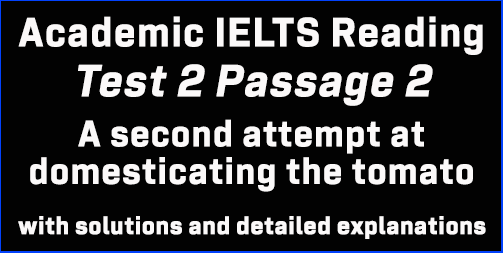IELTS General Training Reading: Cambridge 4 Test B Section 3; Understanding Bee Behaviour; with top solutions and best explanations
This General Training IELTS Reading post focuses on solutions to IELTS Cambridge 4 Reading Test B Section 3 that has a passage titled ‘Understanding Bee Behaviour’. This is a targeted post for GT IELTS candidates who have major problems finding out and understanding Reading Answers in the GT module. This post can guide you the best to understand every Reading answer without much trouble. Finding out IELTS Reading answers is a steady process, and this post will assist you in this respect.
IELTS Cambridge 4 Test B: GT Reading Module
Section 3:
The headline of the passage: Understanding Bee Behaviour
Questions 28-34: List of headings
[In this question type, IELTS candidates are provided with a list of headings, usually identified with lower-case Roman numerals (i, ii, iii, etc,). A heading will refer to the main idea of the paragraph or section of the text. Candidates must find out the equivalent heading to the correct paragraphs or sections, which are marked with alphabets A, B, C and so forth. Candidates need to write the appropriate Roman numerals in the boxes on their answer sheets. There will always be two or three more headings than there are paragraphs or sections. So, some of the headings will not be used. It is also likely that some paragraphs or sections may not be included in the task. Generally, the first paragraph is an example paragraph which will be done for the candidates for their understanding of the task.
Tips to answer this question: Don’t read the list of headings first. Have a quick look at the questions, and go straight to the first question and start reading the paragraph associated with it. Skimming is the best reading technique. You need not understand every word here. Just try to gather the gist of the sentences. That’s all. Read quickly, and don’t stop until you finish each sentence.]
Question 28: Section A
To find this answer, we have to read the middle part of the paragraph carefully. Here, the author of the text says, “ . . .. For bees are arguably the only animals apart from humans which have their own language. . . ..”
Here, the only animals apart from humans which have their own language = The special position of bee language,
So, the answer is: vi (The special position of bee language)
Question 29: Section B
The final lines of paragraph B say, “ . .. Von Frisch realised that, in some way, messages were being passed on back at the hive1, messages which said, “Out there, at this spot, you’re going to find food.”
Here, Von Frisch realised that = Von Frisch discovers that,
messages were being passed on back at the hive1 = bees communicate,
So, the answer is: iv (Von Frisch discovers that bees communicate)
Question 30: Section C
Take a look at the first few lines, “But how was it happening? To watch the bees, von Frisch constructed a glass-sided hive. He found that, once the scout bees arrived back at the hive, they would perform one of three dance types. . ..”
Then, in the following lines, he describes all the three dances in details.
So, the answer is: x (Von Frisch discovers three types of dance)
Question 31: Section D
In section D, the first few lines say, “Experimenting further, von Frisch unraveled the mystery of the first two related types, the round and the sickle dances. These dances, he concluded, told the bees simply that, within quite short distances of the hive there was a food source worth chasing. .. .. ..”
Here, These dances . .. told the bees … . .. within quite short distances of the hive there was a food source = the purpose of the two simple dances,
So, the answer is: viii (The purpose of the two simple dances)
Question 32: Section E
Section E has two paragraphs.
First, in the end of the first paragraph, the writer says, “ . .. . If he placed the feeding dish over nine metres away, the second type of dance, the sickle version, came into play. But once he moved it past 36 metres, the scouts would then start dancing the third, quite different, waggle version.”
These lines suggest that bees express the distance by means of different types of dance.
So, the answer is: vii (Expressing distance by means of dance)
Question 33: Section F
In section F, take a close look at lines 5-7, “ . .. . The outside dance was fairly easy to decode: the straight portion of the dance pointed directly to the food source, so the bees would merely have to decode the distance message and fly off in that direction to find their food.”
Here, the outside dance = the dance to communicate from outside the hive,
This means Section F talks about how bees communicate to provide direction to food source from outside a hive.
So, the answer is: ii (Communicating direction when outside a hive)
Question 34: Section G
Take a look at the first few line of Section G, “But by studying the dance on the inner wall of the hive, von Frisch discovered a remarkable method which the dancer used to tell her sisters the direction the direction of the food in relation to the sun. . . .”
Here, the dance on the inner wall of the hive = the dance when inside a hive,
This means paragraph G talks about how bees communicate to provide direction to food source from intside a hive.
So, the answer is: v (How bees communicate direction when inside a hive)
Questions 35-37: Listing names with ONE WORD only
[In this type of question, candidates need to list some names which can be found in the passage. The rules for finding answers to this sort of question are simple. Just scan for correct keywords in the question, locate the paragraphs carefully and find the names. Remember, the questions may not follow any sequential order but they can be found very close to each other.]
The writer mentions THREE kinds of bee dance identified by von Frisch.
List the name the writer gives to each dance.
Keywords for this question: THREE, kinds of, bee dance, identified by, Von Frisch,
The names of the three dances can be found in paragraph D and E.
First, take a look at the first lines of Section D, as the writer explains, ”Experimenting further, von Frisch unraveled the mystery of the first two related types, the round and the sickle dances. . . ..”
Then, take a look at the final line of the first paragraph of Section E, “. .. . But once he moved it past 36 metres, the scouts would then start dancing the third, quite different, waggle dance.”
So, the answers for questions 35, 36 & 37 are: (in any order)
round
sickle
waggle
Questions 38- 40: Completing sentences with NO MORE THAN THREE WORDS
In this type of question, candidates are asked to write maximum of three words to complete sentences on the given topic. For this type of question, first, skim the passage to find the keywords in the paragraph concerned with the answer, and then scan to find the exact word.
[TIPS: Here scanning technique will come in handy. Target the keywords of the questions to find the answers. Remember to focus on Proper nouns, random Capital letters, numbers, special characters of text etc.]
Question 38: von Frisch discovered the difference between dance types by changing the position of _______.
Keywords for this question: Von Frisch, discovered, difference between, dance types, changing, position of,
In section E, lines 4-6 of the first paragraph explains how von Frisch discovered the difference between dance types, as he explains here, “ . .. . . On a hunch, he started gradually moving the feeding dish further and further away and noticed as he did so, that the dances of the returning scout bees also started changing. .. . . .”
Here, the dances of the returning scout bees also started changing = the difference between dance types, moving = changing the position of,
So, the answer is: the feeding dish
Question 39: The dance outside the hive points in the direction of _________.
Keywords for this question: dance, outside the hive, points, direction of,
The answer can be found in section F, in lines 4-6. The author of the text says here, “ … … . The outside dance was fairly easy to decode: the straight portion of the dance pointed directly to the food source, . . .. .”
Here, The outside dance = the dance outside the hive, pointed directly to = points in the direction of,
So, the answer is: the food (source)
Question 40: The angle of the dance from the vertical shows the angle of the food from __________.
Keywords for this question: angle of the dance, from, vertical, shows, angle of the food, from,
First, in section F, take a look at lines 1-3, “ . .. . .. When the scout bees came home to tell their sisters about the food source, sometimes they would dance outside on the horizontal entrance platform of the hive, and sometimes on the vertical wall inside. .. ..”
This means the dance inside the hive wall was vertical.
Then, in section G, the first few lines say, “But by studying the dance on the inner wall of the hive, von Frisch discovered a remarkable method which the dancer used to tell her sisters the direction of the food in relation to the sun. .. . .”
Here, the dance on the inner wall = the dance from the vertical, the direction of the food = the angle of the food,
So, the answer is: the sun
Click here for solutions to Cambridge 4 GT Test B Section 1
Click here for solutions to Cambridge 4 GT Test B Section 2




Hello